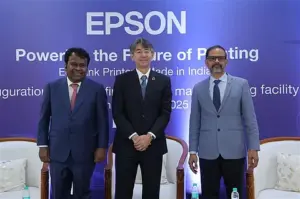In a significant advancement for renewable energy technologies, a research team led by Professor Jinzhan Su at Xi’an Jiaotong University has unveiled a pioneering self-biased hybrid system designed to enhance the efficiency of photoelectrochemical water splitting. This innovative system employs spectral beam splitters (BSs) to channel specific segments of the solar spectrum to distinct components, optimizing energy utilization.
The introduction of this hybrid system marks a pivotal moment in the quest for sustainable energy solutions. By leveraging spectral beam splitters, the system can effectively separate and direct wavelengths of light to where they are most efficiently used, thereby improving the overall performance of solar-driven water splitting processes.
Understanding the Hybrid System
The novel system developed by Professor Su’s team integrates spectral beam splitters, which act as a sophisticated filter, directing different parts of the solar spectrum to various components of the system. This approach allows for the simultaneous utilization of both photovoltaic and photoelectrochemical processes, maximizing the conversion efficiency of solar energy into hydrogen fuel.
According to the research, the system’s self-biased nature eliminates the need for external electrical input, making it a more sustainable and cost-effective solution. The strategic use of spectral beam splitters ensures that each component of the system receives the optimal light wavelength, enhancing the efficiency of the water splitting process.
The Science Behind Spectral Beam Splitters
Spectral beam splitters are optical devices that separate light into its component wavelengths. In the context of this hybrid system, they play a crucial role by directing specific wavelengths to photovoltaic cells and photoelectrochemical cells. This targeted approach allows each cell to operate at its peak efficiency, significantly boosting the overall energy conversion rate.
“The use of spectral beam splitters in our hybrid system represents a significant leap forward in solar energy technology,” Professor Su explained. “By optimizing the use of the solar spectrum, we can achieve higher efficiency in water splitting, paving the way for more sustainable hydrogen production.”
Implications for Renewable Energy
This development comes at a time when the global demand for clean energy solutions is at an all-time high. The hybrid system’s ability to efficiently convert solar energy into hydrogen fuel could have far-reaching implications for industries reliant on fossil fuels, potentially reducing carbon emissions and promoting energy independence.
Experts in the field of renewable energy have lauded the research, noting its potential to revolutionize the way solar energy is harnessed. By improving the efficiency of water splitting, this technology could accelerate the adoption of hydrogen as a viable alternative to traditional energy sources.
Future Prospects and Challenges
While the hybrid system presents a promising advancement, there are challenges that need to be addressed before it can be widely implemented. Scaling the technology for industrial use and reducing production costs are critical steps that researchers are currently focusing on.
Professor Su and his team are optimistic about the future of their research. “Our goal is to refine the technology further and explore its applications across different sectors,” he stated. “We believe that with continued innovation, we can make significant contributions to the global energy landscape.”
As the world continues to grapple with the effects of climate change, innovations like the hybrid system developed at Xi’an Jiaotong University offer hope for a cleaner, more sustainable future. The move towards efficient and renewable energy sources is not just a scientific pursuit but a necessary step towards preserving our planet for future generations.







